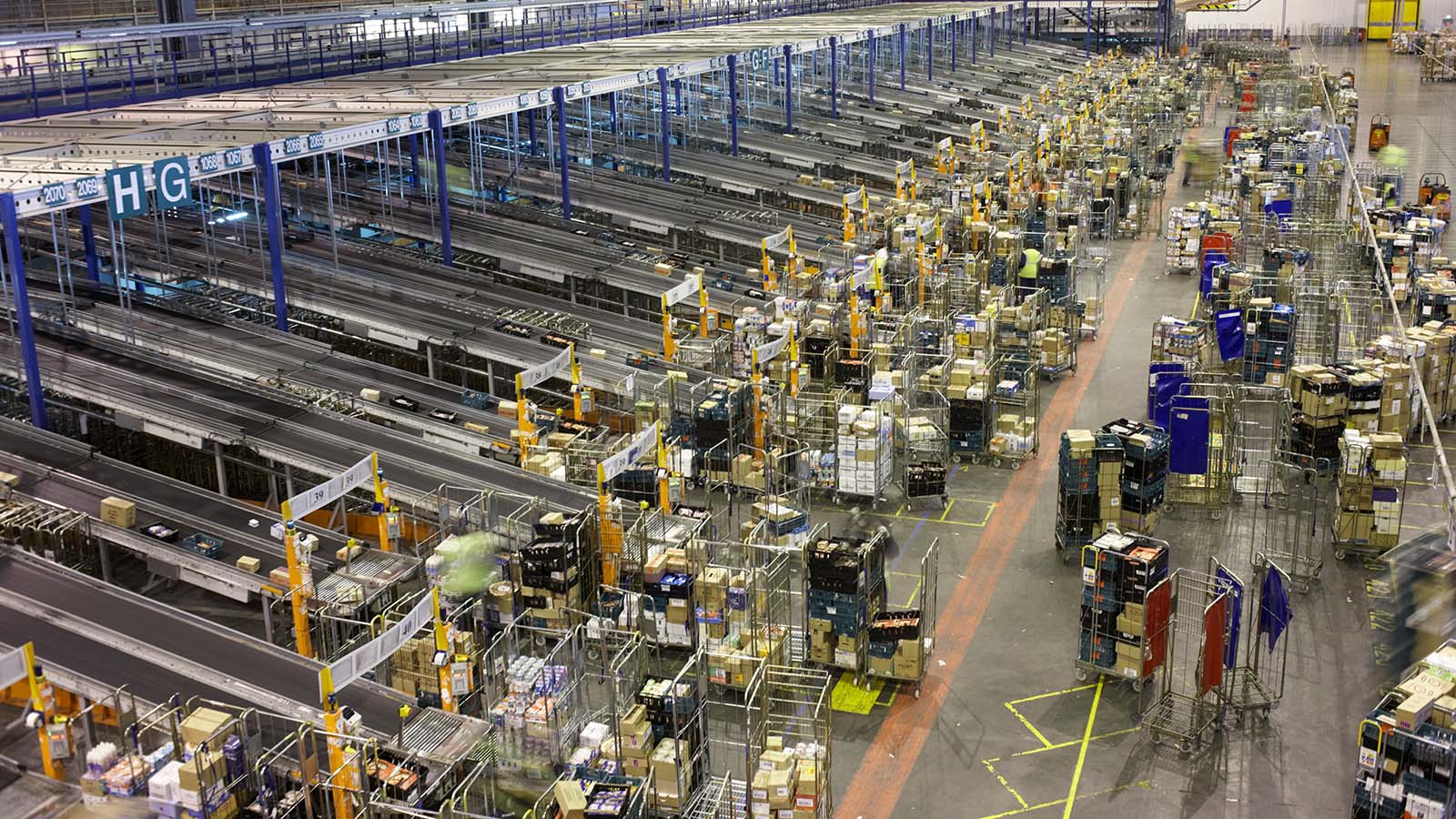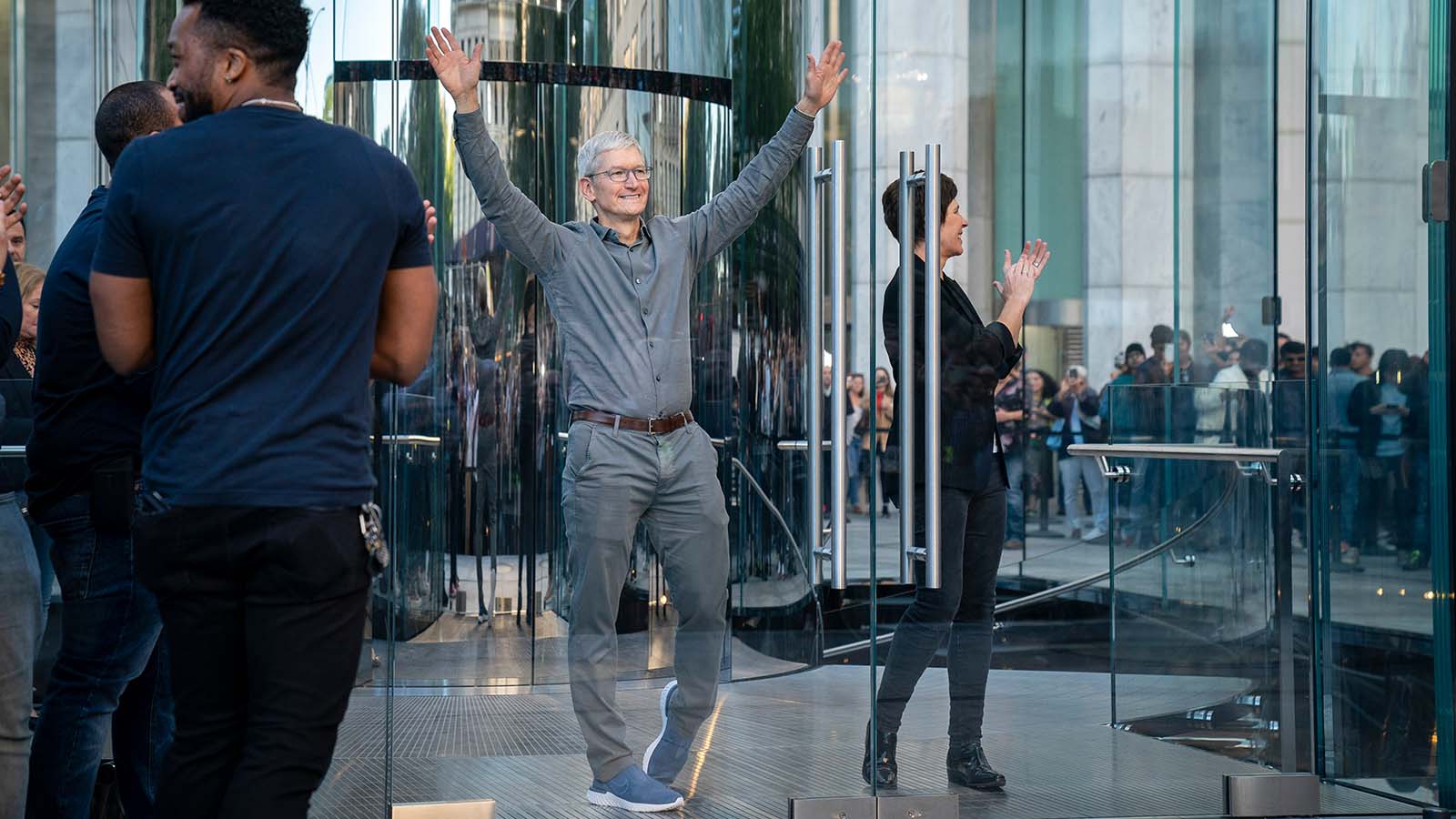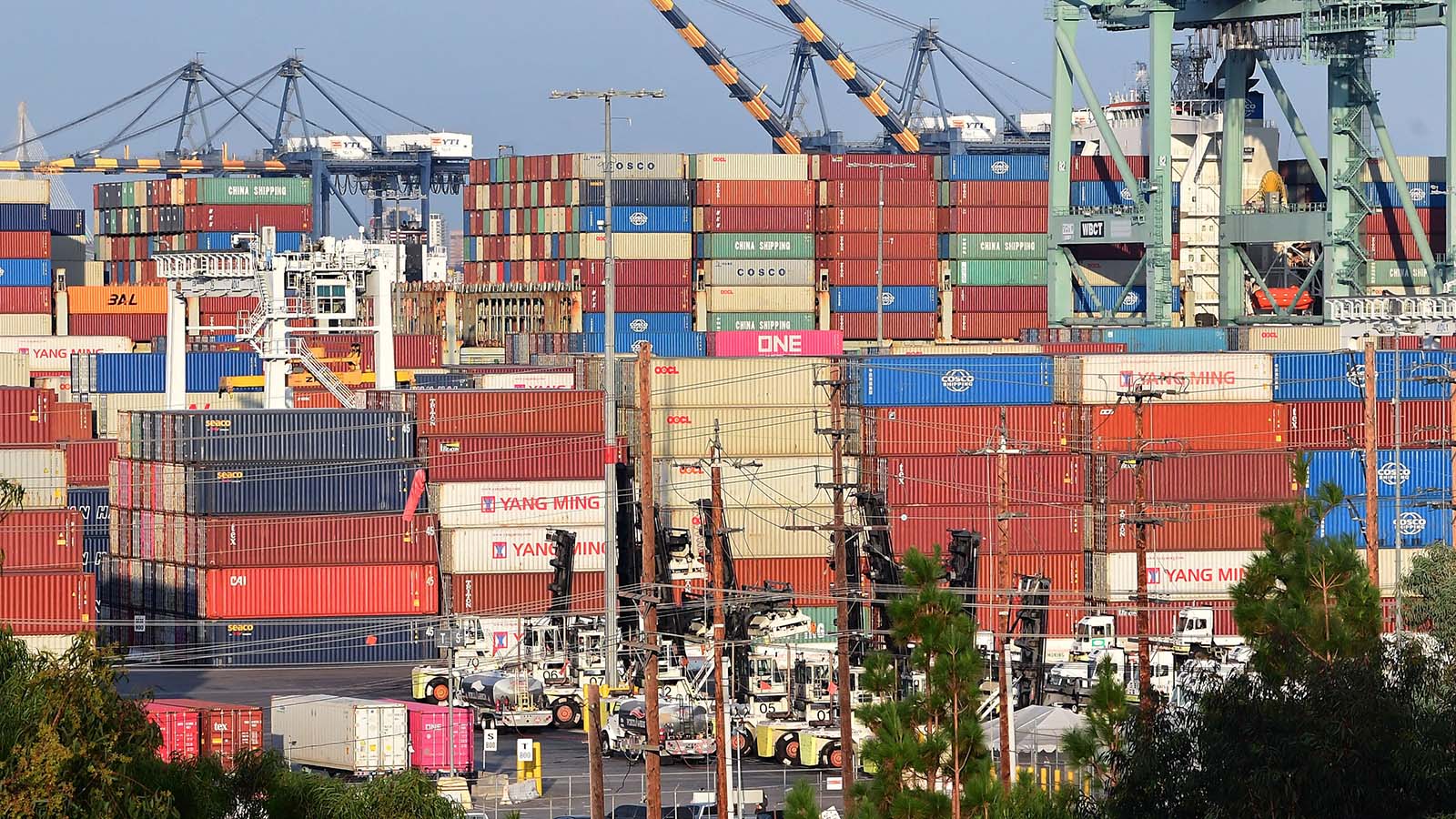That new MacBook Black Friday deal might be harder to get than ever in 2021
If you're hoping for some Black Friday MacBook deals next month, you and many other MacBook fans might be out of luck, no matter how much you're willing to pay or how badly Apple wants to sell you its new 16-inch MacBook Pro.
The causes for limited supply are as varied as there are factories, towns, cities, and ports all along Apple's supply chain, but there is only one reason: just-in-time production.
A revolution in supply chain management and manufacturing in the post-war era completely upended the way goods around the world were manufactured – as well as where they were manufactured – and for more than half a century this production process has fueled globalization, produced soaring corporate profits (and subsequent wealth inequality), and fed a steady supply of consumer goods to growing consumer markets around the globe.
But that industrial innovation has now run head first into its one singular weakness – one that everyone anticipated but nobody prepared for – and Black Friday 2021 could be the first of that collision's many casualties.

What is just-in-time production?
Basically, just-in-time production – also known as just-in-time logistics, just-in-time manufacturing, lean manufacturing, or simply JIT – is the principle that a producer aims to limit the time materials used to build a finished product sit idle.
If you are going to build a car, for example, there are a couple of ways you can go about setting up your factory. All of them will require you to set up a warehouse to hold all of the raw and refined materials you need to build a car, from aluminum panels to panes of window glass to electronics and computer chips. The question is: how big do you build that warehouse?
In ye olden days of manufacturing, you might have a lot of raw materials stocked up well in advance to produce a certain number of cars, so if you wanted to build 1,200 cars a year, you might order 600 engines in January and another 600 in July.
This isn't the most efficient way of organizing your production though, since you might use up 100 engines in January, but you still spent the money upfront to buy the 500 other engines that are just sitting idle in the warehouse. That money spent on those 500 engines could have been used elsewhere to better maximize profits.
This is more or less the way things were done though before the adoption of JIT by manufacturers around the world, from the tiniest parts manufacturers making a hinge used in a Samsung Galaxy Z Fold 3 to the industry goliaths like Apple whose MacBook laptops are all delivered on the thinnest of lead times.
Like the name described, just-in-time production produces or delivers a product "just in time" for it to be consumed. In our car example, if you are making 100 cars every month, you'll order 100 engines for January delivery, then another 100 for February delivery, another 100 for March, and so on.
- Semiconductor shortage reaches a new and unwelcome landmark
- Semiconductor firms report shortage of workers
- Chip shortage nightmare could last for years, warns IBM
Refine it even more and you can be ordering 23 engines for the cars you expect to assemble every week throughout the year, or if you wanted to be really efficient, just order deliveries of about three engines a day, every day.
This way, before you even have time to put an engine on a shelf in your warehouse, you need to put it into the next car that's already rolling down the assembly line. Heck, why even bother with a warehouse at all at this point if parts can almost literally roll out the back of a truck into the assembly line itself?
In the perfect model of this production paradigm, you spend exactly the amount of money you need to in that moment to keep production humming along and not a penny more, which frees you up to spend the money you didn't spend buying excess parts on things like executive bonuses, and stock buybacks that make investors very happy.
There's a very obvious problem with just-in-time production though: the reliance on a reliable delivery of materials, which is something that is entirely out of the control of the producer. If you use up all of the engines you received today and the next day's supply of engines doesn't show up, suddenly your assembly line grinds to a halt until the required part is delivered.
Delivery also impacts production that doesn't use JIT, of course, but the potential for disruption can be significantly reduced by investing in a reserve that you can fall back on if a delivery is late. This costs extra money, but it offers a degree of security and robustness in your supply chain that sacrifices cash liquidity for production stability.
In the last 70 years, though, the world's manufacturers have nearly all adopted just-in-time production, building up globalized supply chains of massive cargo ships that bring raw materials, finished products, and everything in between out of the Global South and Asia to ports in the richer markets of North America and Europe like worker ants to a half-eaten apple.

Inventory is 'fundamentally evil'
Steve Jobs poached Tim Cook from Compaq in 1998 for one reason: to streamline Apple's supply chain. At the time, according to Cult of Mac, Apple was making about $6 billion annually, which it currently makes in a little over a week today. Cook was a major part, if not the major part, of that transformation, and his secret as Apple's new COO was just-in-time production on a scale nobody had ever seen.
"You kind of want to manage it like you're in the dairy business" Cook said of warehouse inventory in Fortune magazine in 2008. "If it gets past its freshness date, you have a problem."
Cook closed factories and warehouses around the world and built relationships with third-party suppliers to create one of the most efficient supply chains that have ever been built, turning over inventory in what few warehouses remained in a matter of days when products used to sit on a shelf for a month or more before moving on to the customer.
The old saying that good generals study tactics but great generals study logistics can certainly be applied to Cook's role as Apple's COO, and even though Jobs' design innovations get all of the public applause, Cook was far more responsible for the company's turnaround in the late 1990s and early 2000s.
For nearly two decades, Cook's strategy looked almost like wizardry, with iPhones and MacBooks appearing right there on the shelf exactly the moment it was sought after by a customer. But the problems of just-in-time production didn't magically disappear, they simply weren't put to the test in a serious way, not until 2020 that is.
Shortage or structural deficit?
Recently, I've been especially bearish on the ongoing semiconductor shortage, since I don't think the novel coronavirus pandemic is the fundamental cause of the problem. But there's no getting around the fact that it has been the single greatest disruption to global commerce and industry since probably the Second World War.
Rather than being the cause of the problem, however, I think it revealed the fundamental weakness in the global economy that had been there for decades, namely the sacrificing of resiliency for the sake of increasing efficiency.
Just in time production truly is incredible when it works, almost like blood in the human body. But clog an artery and you're asking for a heart attack. The Ever Given blocked the Suez canal at an estimated cost of $6.7 million a minute back in March, stopping the flow of 12% of global trade.
Something similar is happening right now at ports across the industrialized world as demand for goods have gone up but the ability to move those goods from factory to customer has been suffering a death by a thousand cuts thanks to just-in-time production.
If there are 10 nodes in a supply chain that all need to be operating well to get you your new 16-inch MacBook Pro on time, a week-long factory closure in the second node is going to block the remaining eight from doing their work.
By the time the second node resumes production, the third node might have a delay in restarting its production after furloughing some of its workers to save costs.
The fourth node might have begun production on another product for which it did have the parts on hand, preventing it from starting work on the delayed product even though the parts from the third node in the chain are now sitting idle on its loading docks for days.

These kinds of singular disruptions that in themselves aren't all that bad start to compound on each other and ripple through the supply chain until the delays aren't in terms of weeks but rather months, or even years.
And once those kinks in the supply chain are created and propagate, you can't exactly stop all of global commerce for a few days so you can straighten the chain out. You simply increase the weight applied to it, making harder by the day to undo. All the while, demand is only going up, especially for Apple products.
Right now though, there are an untold number of Apple MacBooks and other devices sitting in gigantic container ships anchored off the coast of California. These ships can't unload their Black Friday cargo because every one of the Port of Los Angeles' berths are already full.
But those ships can't leave because they can't unload their cargo until more room is cleared for the thousands of shipping containers it brought in because there's no room at the port to stack the containers. With an ongoing shortage of truck drivers, fewer people are available to move containers out of the various ports currently choking on cargo it can't actually move out to retailers in a timely manner.
Recent moves by the US government and others are trying to clear out the congestion in time to get goods moving through to customers, but it might have come too late to prevent at least some disruption to retailer supplies and inventories.
This, even more than the lack of semiconductors, could be the biggest disruptor of holiday shopping around Black Friday this year and it didn't have to be, but the supply chain disruptions look like they might be peaking just in time to put the all-important holiday shopping season into turmoil.
- Can't find a new MacBook? Check out our best laptops list for alternatives
source https://www.techradar.com/news/that-new-macbook-black-friday-deal-might-be-harder-than-ever-to-get-in-2021/


No comments